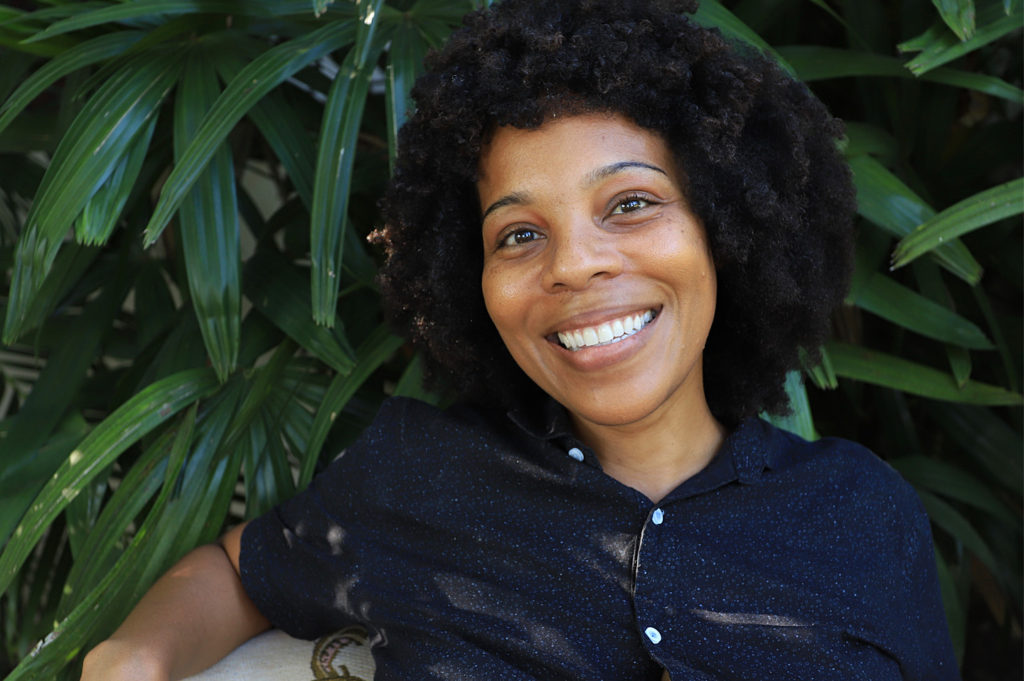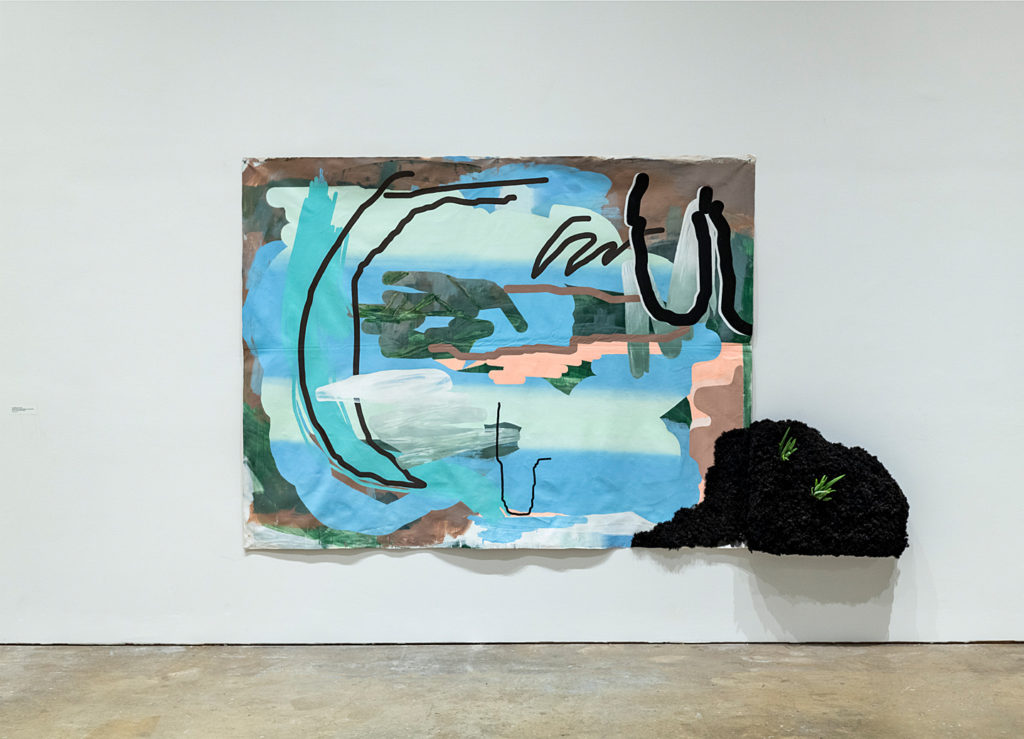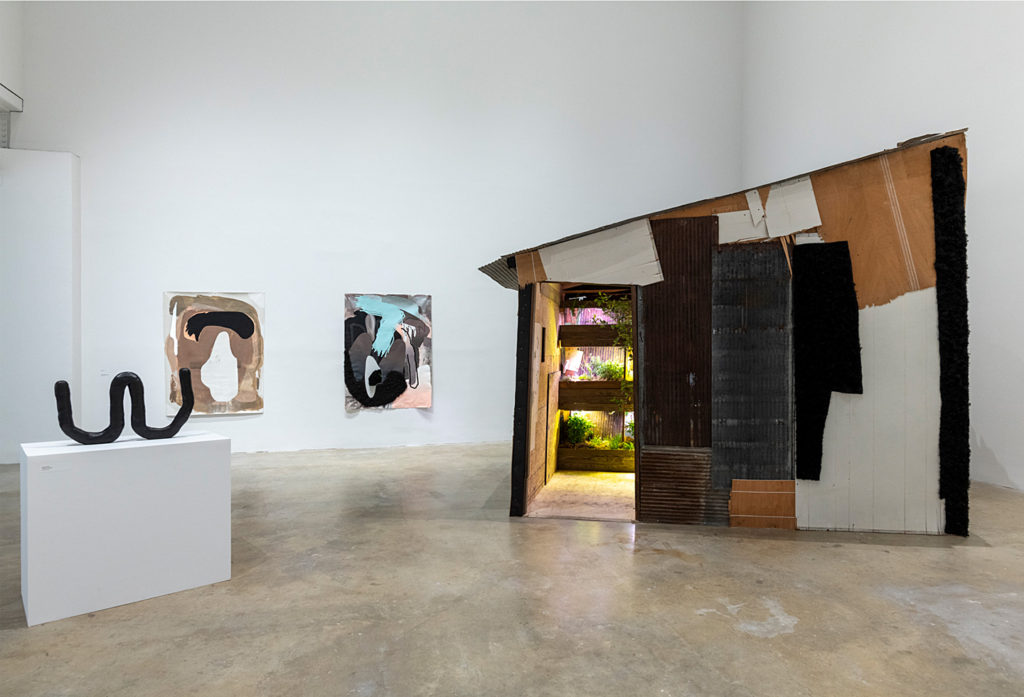A conversation between Marsha Pearce and Deborah Anzinger

Marsha Pearce: Hi Deborah, how are you? How are you grappling with all that has been happening in our world?
Deborah Anzinger: Hi Marsha, I am happy to be in touch with you and to hear you are holding up and in good health. I am trying to manage the exhaustion I feel from anxiety regarding what needs to be done in reconfiguring our collective relationship to this world and how to tap into a different driving force for that…. And to be at peace with what is relentless work encompassing childcare, art practice and administration. I try to remember to breathe as I address the tasks in front of me one by one, and to be brave enough to rest even when I have fallen short of what is expected. I’m doing very well, all things considered: I am able to imagine and to work (mentally and physically); I am surrounded by family and friends, physically and remotely.
Congratulations on being selected as a 2020 Soros Arts Fellow. The fellowship advances the practice of socially engaged artists and cultural producers. Please tell me about the project you plan to pursue with this 2020 fellowship opportunity.
Thank you, Marsha. Through the Soros Arts Fellowship, I am creating two, living, interactive sculptures titled “Training Stations” located within the Cockpit Country in the community of Maroon Town in the parish of St. James, where my family history is tied. The works will exist as exterior-interior spaces constructed from a combination of materials I have been using over the past three years— living plants, mirrors, pigments, and earth. Like in my previous work, the visual language is derived from signifiers of the Black female body.
The sculptures, which will be offered as a communal gathering space, are conceived to be at once archival and arboreal spaces using earth from the site for construction. Many of our histories were not archived but passed orally from generation to generation, and in turn we have learned the official story about ourselves through colonial literature. Through the project I attempt to continue the tradition of oral storytelling, but with the sculpture, create space for archiving recorded conversations. I have begun interviewing community members about lived experiences, personal subjectivities, family histories, ties, and land. The sculpture will serve partly as a community listening station to share in our distinct and overlapping experiences recorded in these interviews, as well as documentation of the environment that has sustained.
The sculpture also constitutes reforestation with the planting of trees (Jamaican mahogany, seaside mahoe, cedar, avocado, cashew and nutmeg). So far, we have planted 60 trees. They are doing well, so we will continue to plant and will have 100 in by the end of this month.
In a context where deforestation is associated with encroachment of forested lands by citizens of communities in the adjoining forest or buffer zones of the Cockpit Country, the sculptures will serve as an experiment integrating architecture with forestry, reforestation and farming.
I have been privileged and honoured to have my mother and father working alongside me on this project. I am so grateful and humbled to be able to work on this project and to have them with me while doing so.
You are the Executive Director of NLS – an artist-run contemporary visual art initiative in Kingston Jamaica. Organisations have been pivoting in this pandemic; arts and cultural spaces have been deeply impacted. How are you thinking about NLS in this “new normal”?
I am thinking of NLS as staying focused in continuing to do the work of supporting artists through our already established programs. The main adjustments have been to allow greater flexibility to the people I am working with while supplying more resources for team members and individuals applying to our programmes to increase their chances of succeeding with their tasks and our outputs. In order to afford more meticulous care in communication and adjustment we have had to dial down public communication temporarily.
Since the pandemic we held an online workshop on how to put together strong applications to our programmes prior to the programme deadlines. We are almost at the end of our shortlist interviews for both the Curatorial and Art Writing Fellowship as well as the group residency, La Práctica, to be hosted by NLS. Ironically La Práctica was inaugurated in the same year we have gone on to have this pandemic, but we will figure out an effective configuration and protocols for sterilisation and prevention of possible transmission.
We have been working on two exciting podcast episodes. One is an interview with Danielle Purifoy who, in the upcoming semester, will be doing an online visit with students at the School of Visual Arts at the Edna Manley College about interdisciplinary art practices and collaboration. The podcast was recently published on our iTunes channel. There is also an upcoming episode on Street Art being produced by two of our interns. With our internship programme this year we took great effort in trying to cultivate a sense of ownership and methodical approaches and accountability with projects in participants.
We also have been supporting a few artists from our programme to create unconventional limited edition prints that we will be sharing first with our 2019 donors and then more broadly with the general public.
We are also going to be taking single bookings for library hours in the next month with sanitation precautions in between visits. All of this is possible with the continued support of our partners, the Prince Claus Fund for Culture and Development Next Gen Program as well as Creative Sounds Limited.

For a number of artists, their work has taken on new signification in our current context. Your art practice confronts several intersecting issues including capitalism, human rights, environmental justice and the politics of the body. With recent global efforts to challenge colonial legacies that amount to oppressive ways of living and being in this world, how are you thinking about your work? How do works, such as the pieces in your solo show last year – titled An Unlikely Birth – resonate afresh in this moment?
Sometimes I feel frustrated by our efforts to challenge colonial legacies. While many of our efforts are based on a quest for economic empowerment and representation of marginalised identities they fail to address how in the fight for these positions, many times we perpetuate the same paradigms we struggle against. Maybe it is that until we can process as a culture, the complexity of not only how white patriarchy imposes hierarchies along social lines including race, gender and sexuality, as well as non-human lifeforms and the earth itself, but also how we as individuals and social groups continue to reanimate the core principles of imperialism, we’ll take turns winning and superseding each other until we have destroyed the earth we need to survive. I hope our fate is to learn the hard lessons that go against the logic of capitalism and in doing so allow the abundance of the earth to thrive and sustain us.
The work I created between 2016 and 2019 in An Unlikely Birth was a rumination on these concerns. In my work, the canvas has served as a space to plot reconfigurations. This work was a period of conception before, what I hope is, the bringing to bear of the ideas.


Science and art are often regarded in silos. In a time like this, some might say the sciences have an essential role to play in navigating the way through this pandemic, while the arts are less important. You are a practicing artist with a PhD in Immunology and Microbiology. How do you see art’s role in our present context and what might dialogue between the arts and sciences offer in times of crisis?
In terms of science’s role in navigating the pandemic, absolutely. The most useful information we have about the virus, in terms of controlling the spread, is coming from the work scientists do. I know a lot of the work scientists do is essential but what this pandemic has shown me firsthand is how a profession can go from being socially obscure or unknown to being in the public eye. My husband is in the field of immunology and microbiology, so I’ve observed the shift locally to see people now actually concerned about the work scientists at UWI do. But I think it’s also important to look at how people who have suffered the greatest from the pandemic, in terms of infections, death toll and economic fallout, tend to be living in places where science and public health are being treated by the government as separate and antithetical to economics, social welfare and civil rights.
In Jamaica, one local industry increasingly receiving its due during the pandemic, by being recognised as essential, is agriculture. At a point it seemed the government had a wake-up call that we need to be able to sustain ourselves locally, and that we have the means to do so through farming. Perhaps workers will eventually migrate from the tourism sector to farming and we will, among other benefits, innovate holistic farming practices that are cohesive with nature.
I think the opposite is also true about professions that have quickly gone from relevant and sought after to now being useless or even detrimental. The most obvious and immediate examples of this are the cruise industry, tourism in general, party promotion, etc. I think if not now, eventually, it will also include some of our art practices.
Within art as a field there is focus on advantageous career moves as part of praxis. I understand this preoccupation with career as part of a way to deal with the anxiety of making a living and trying to thrive in a capitalist system, yet maybe as artists we don’t think enough about how we prop up and help propagate the machinery of capitalism. It often seems to me that since we are the exploited labour and our work the stock being traded, it means we have no subversive power in our individual and collective decision-making nor the wherewithal to create different systems in which we can thrive and obsolete the current ones. It seems we believe the power dynamics against our favour let us off the hook in terms of accountability. How many of the ideas generated by artists and thinkers just become part of the capitalist machinery, bought and sold as works of art and basically used to generate content, yet never being employed beyond hypothetical conversations and talking points?
Speaking of silos, what would happen if as artists concerned with equitable and socially just systems we moved more readily between the think-spaces of our studios and outer spaces, to not just collaborate with, but work for people doing projects in other fields with overlapping interests who would question us and help to bring any of our worthwhile ideas from the hypothetical into the everyday way we live?
Such art practices are hard to characterise and are challenging for our ever-hungry culture to consume, and perhaps less glamorous to look at. But then again how does it implicate our role in capitalism as artists if easy characterisation, quick consumption and glamour are what we seek rather than the opportunity to change things in ways beneficial to the world we share with so many?
Stay connected with Deborah Anzinger:
Website: deborahanzinger.com

Comments are closed, but trackbacks and pingbacks are open.